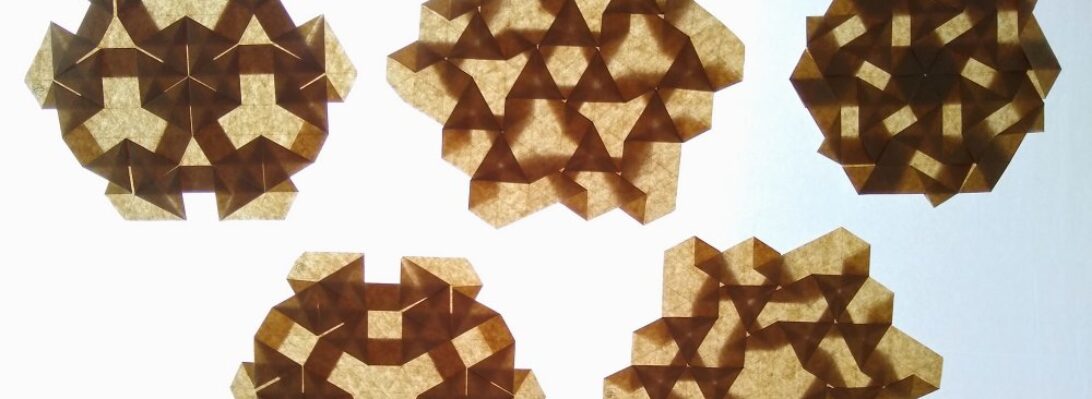I sat in on a fold-along on Fakebook a few Sunday evenings ago where Fergus Currie demonstrted the folding of modules for this beauty – I got a little lost but on re-watch managed to nut out what was what:

This is a compound of 3 cubes – each rotated on top of each other – when you see it you see it. It is comprised of 48 modules – 2 different shapes, 3 different colours (8 of each).
The folding is exacting, the angles and constructions accomplished and sophisticated, the tolerances for error are small. I think I was a victim of paper thickness when I folded mine – I used bond A3 photocopy paper because I had some lovely strong colours. The result of this choice was that layers get thick, some of the axes are not as crisp as I would like them to be, but it is finished, having taken a seeming age to fold and assemble.

Right or wrong, I assembled the cube skeletons first – their lock is a dual diagonal slide – delicious when it works, agonising when it does not – I got out my long-nosed needle tweezers to gain purchase from inside the model – my hands are too big and clumsy for such tight spaces.
I then formed the 3-unit connectors that fill in the gaps. Either I folded them incorrectly or something but I could not find a way for the tabs to fit flush in the pockets- they were a few mm proud. After trying everything, I settled on a simple tab reduction (shhh, I used scissors to remove a chevron slither off the stickey-outey part) for a perfect fit. The actual facets were the correct size to fill the holes, and when they sit flush the illusion of the 3 cubes works nicely.

This was a bit of a mind-fuck working out the initial layout morphology – I did develop a method, after buggering it up a couple of times there is definite structure and in the end it was completely obvious, but when you have a mound of disconnected units and are starting it is a little bewildering to work out what to do first.

I love the geometry of compound solids – and admire the skill of designing them. I have folded most, and will continue to seek these geometrics as the end object is very pleasing. I am not sure I could fold this smaller, without using much thinner paper – thinner paper would also make assembling it much harder, so it is an interesting connundrum – fun fold tho. Many thanks to Fergus for sharing his design on Fakebook – it is in his book: Compound Polyhedra – you should buy it.


Thanks again for the post, Peter!
The bits you cut off are tucked inside on the original but the idea is the same. Great work!
On the video, this is shown at around 1:21:oo.